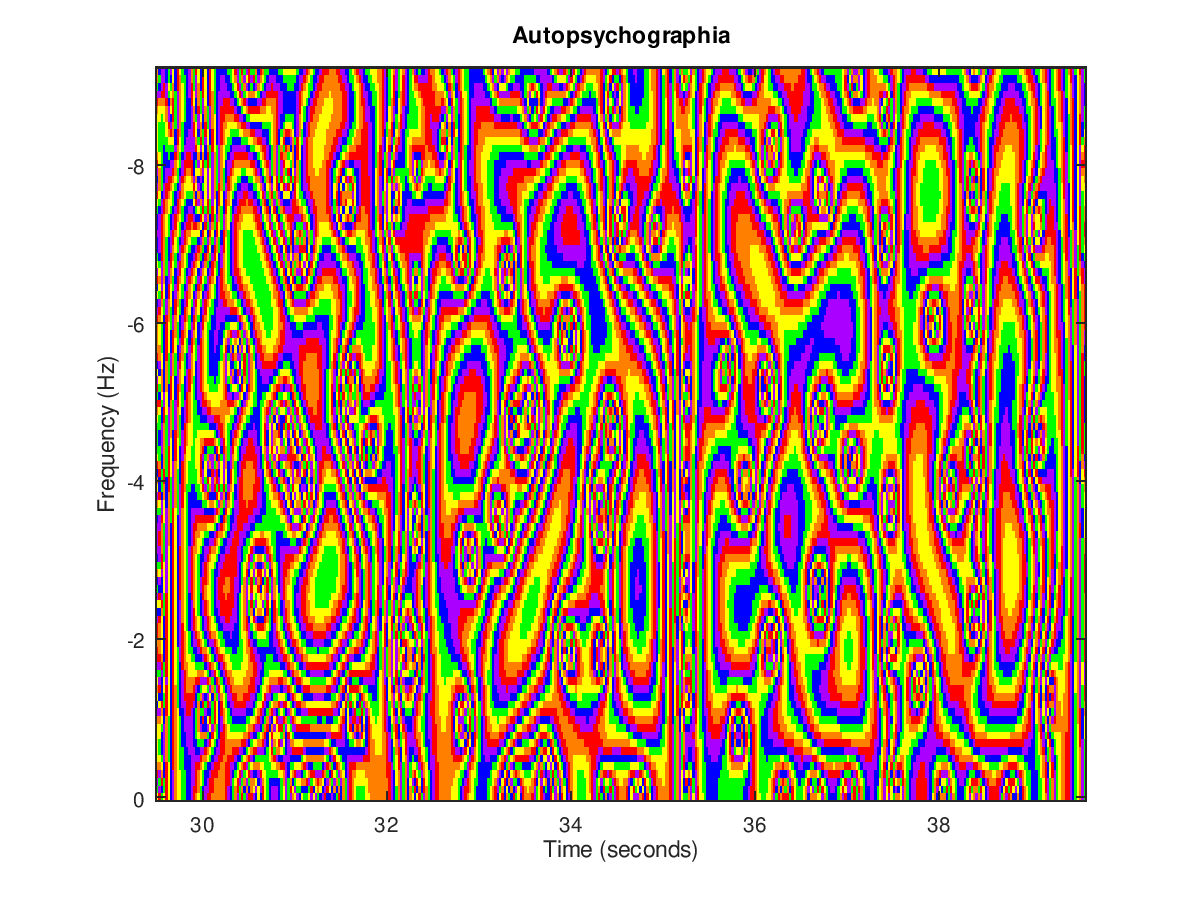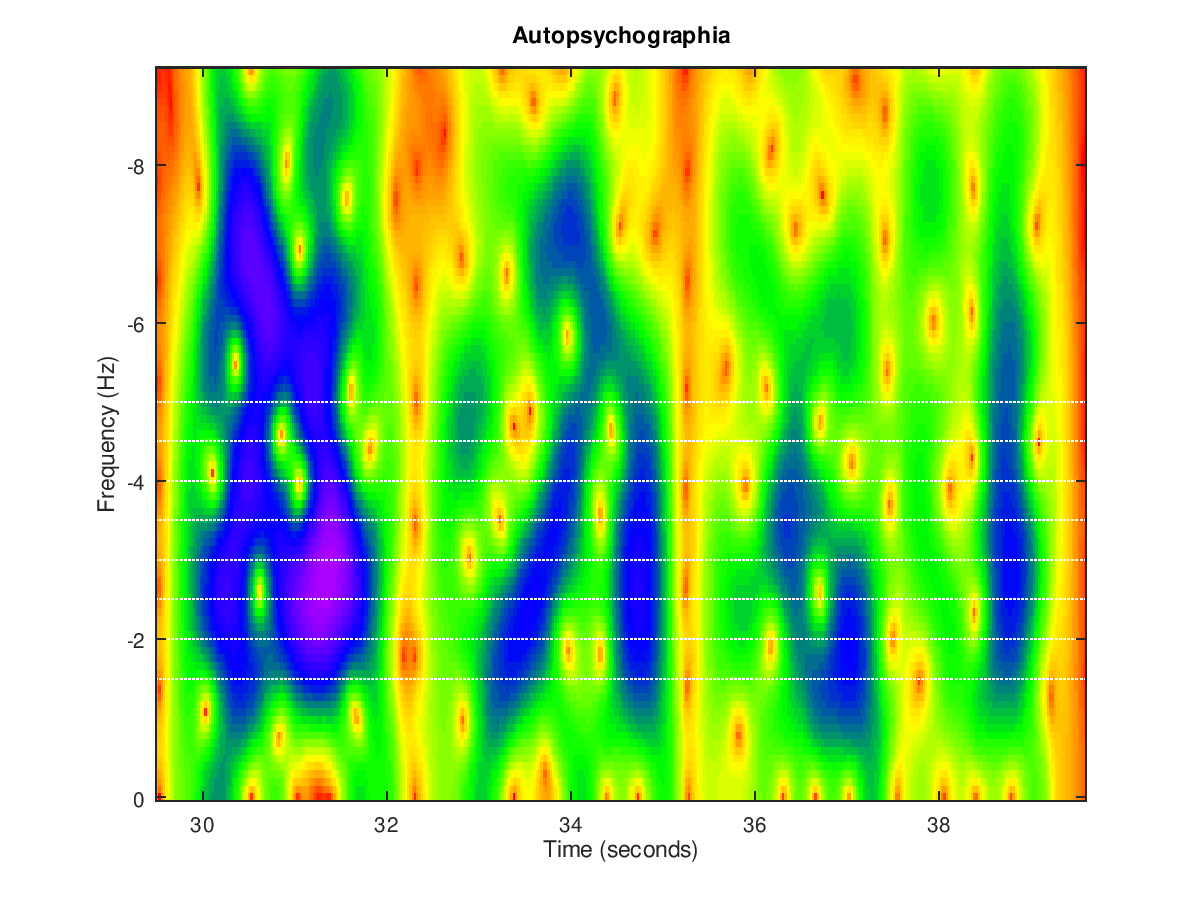Accidental art
« previous post | next post »
That picture is an accidental byproduct of an exploration that I've documented in a couple of previous posts, "Towards automated babble metrics" and "Syllable-scale wheelbarrow spectrogram".
The picture started with Charles Bernstein's reading of his poem Autopsychographia (published in his 2013 collection Recalculating, a translation from Fernando Pessoa's 1931 poem Autopsicografia). This reading was recorded 10/10/2016 at the Contemporary Poetics Research Centre, Birkbeck, University of London, and the picture represents an analysis of the last four lines at syllable-scale frequencies:
And so the wheels go whack
Ensnaring our logical part
In the train wreck
Called the human heart
I was exploring the use of different colormaps for the syllable-scale spectrogram of that six-second clip, and what I meant to do would have given me this picture:
But I typed
colormap("prism");
instead of
colormap("rainbow");
and got this picture instead.
Summarizing the context from my earlier posts:
I was messing around, trying to find an automated method to characterize preverbal infant vocalizations — the range of things from growling and cooing and crying and fussing and laughing to so-called "canonical babbling" — without the difficult and uncertain step of quasi-phonetic segmentation and labelling. One of the things I tried was an old idea from the first book about the sound spectrograph, Potter Koop & Green's Visible Speech (1947):
By recording speech in such a way that its energy envelope only is reproduced, it is possible to learn something about the effects of recurrences such as occur in the recital of rimes or poetry. In one form of portrayal, the rectified speech envelope wave is speeded up one hundred times and translated to sound pattern form as if it were an audible note. Syllabic components of a one-cycle-per-second rate thus would become oscillations at 100 cycles a second, while those at ten cycles would be boosted to 1,000 cycles.
In the mid 1940s, Potter, Koop & Green were forced to do this by passing audio through a rectifying circuit, re-recording it several times at a series of faster analog-device speeds, and then using the result to make analog sound spectrograms. This being 2019, I could easily do something equivalent with a few lines of computer code, and could display the true frequency numbers on the plot, not numbers 100 times greater.
Does this stuff lead towards the desired babble metrics? I don't know yet, but anyhow, I thought I'd try the same method on poetry readings,. I started with William Carlos Williams' The Red Wheelbarrow, and my second attempt was Charles Bernstein's Autopsychographia. The accidentally recolored picture strikes me as an appropriate representation of the poem, whatever else the method may be good for.


unekdoud said,
May 30, 2019 @ 6:47 pm
With this kind of rapidly-cycling colormap, the accidental art version is effectively the contour graph of the regular version. This might be helpful for finding detail in both loud and quiet sections, although those quiet sections would usually be background noise.
KeithB said,
May 31, 2019 @ 8:24 am
If someone can get 1.3 million dollars for a laptop with viruses:
https://fivethirtyeight.com/features/significant-digits-for-thursday-may-30-2019/
This should be worth *something*.